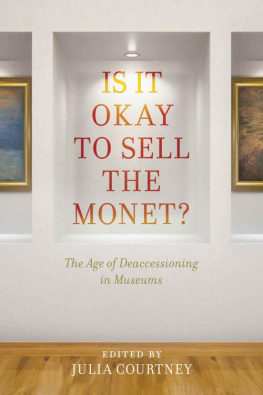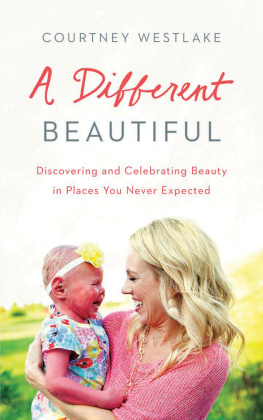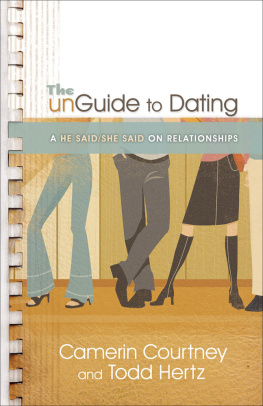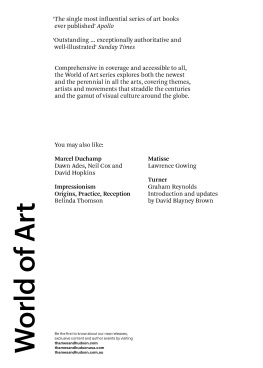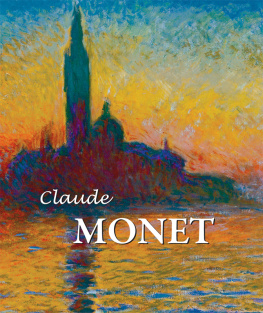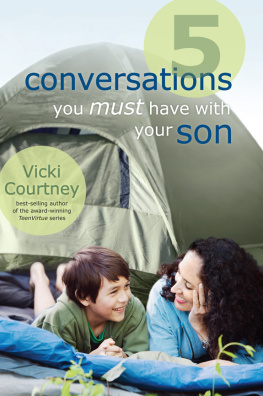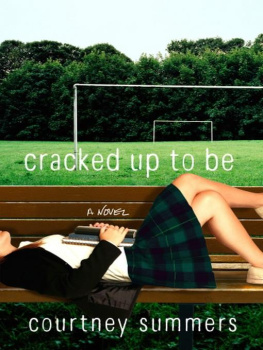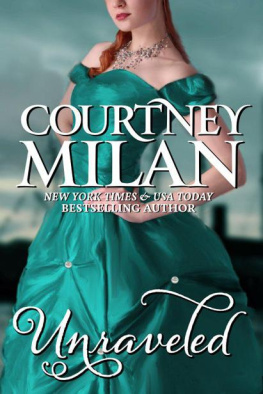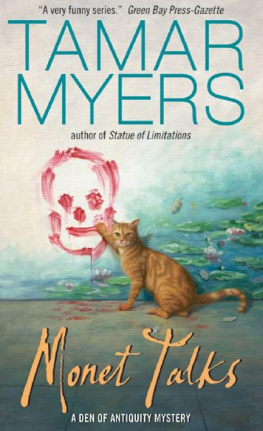Julia Courtney - Is It Okay to Sell the Monet?
Here you can read online Julia Courtney - Is It Okay to Sell the Monet? full text of the book (entire story) in english for free. Download pdf and epub, get meaning, cover and reviews about this ebook. year: 2018, publisher: Rowman & Littlefield Publishers, genre: Romance novel. Description of the work, (preface) as well as reviews are available. Best literature library LitArk.com created for fans of good reading and offers a wide selection of genres:
Romance novel
Science fiction
Adventure
Detective
Science
History
Home and family
Prose
Art
Politics
Computer
Non-fiction
Religion
Business
Children
Humor
Choose a favorite category and find really read worthwhile books. Enjoy immersion in the world of imagination, feel the emotions of the characters or learn something new for yourself, make an fascinating discovery.
- Book:Is It Okay to Sell the Monet?
- Author:
- Publisher:Rowman & Littlefield Publishers
- Genre:
- Year:2018
- Rating:4 / 5
- Favourites:Add to favourites
- Your mark:
- 80
- 1
- 2
- 3
- 4
- 5
Is It Okay to Sell the Monet?: summary, description and annotation
We offer to read an annotation, description, summary or preface (depends on what the author of the book "Is It Okay to Sell the Monet?" wrote himself). If you haven't found the necessary information about the book — write in the comments, we will try to find it.
Is It Okay to Sell the Monet? — read online for free the complete book (whole text) full work
Below is the text of the book, divided by pages. System saving the place of the last page read, allows you to conveniently read the book "Is It Okay to Sell the Monet?" online for free, without having to search again every time where you left off. Put a bookmark, and you can go to the page where you finished reading at any time.
Font size:
Interval:
Bookmark:
Is It Okay to Sell the Monet?
Is It Okay to Sell the Monet?
The Age of Deaccessioning in Museums
Edited by Julia Courtney
ROWMAN & LITTLEFIELD
Lanham Boulder New York London
Published by Rowman & Littlefield
A wholly owned subsidiary of The Rowman & Littlefield Publishing Group, Inc.
4501 Forbes Boulevard, Suite 200, Lanham, Maryland 20706
www.rowman.com
Unit A, Whitacre Mews, 26-34 Stannary Street, London SE11 4AB
Copyright 2018 by The Rowman & Littlefield Publishing Group, Inc.
All rights reserved . No part of this book may be reproduced in any form or by any electronic or mechanical means, including information storage and retrieval systems, without written permission from the publisher, except by a reviewer who may quote passages in a review.
British Library Cataloguing in Publication Information Available
Library of Congress Cataloging-in-Publication Data
Names: Courtney, Julia Hollett, editor.
Title: Is it okay to sell the Monet? : the age of deaccessioning in museums / edited by Julia Courtney.
Description: Lanham : Rowman & Littlefield, 2018. | Includes bibliographical references and index.
Identifiers: LCCN 2018018060 (print) | LCCN 2018020792 (ebook) | ISBN 9781442270831 (Electronic) | ISBN 9781442270817 (cloth : alk. paper) | ISBN 9781442270824 (pbk. : alk. paper)
Subjects: LCSH: MuseumsDeaccessioning. | MuseumsDeaccessioningCase studies.
Classification: LCC AM133 (ebook) | LCC AM133 .I8 2018 (print) | DDC 069dc23
LC record available at https://lccn.loc.gov/2018018060
 The paper used in this publication meets the minimum requirements of American National Standard for Information SciencesPermanence of Paper for Printed Library Materials, ANSI/NISO Z39.48-1992.
The paper used in this publication meets the minimum requirements of American National Standard for Information SciencesPermanence of Paper for Printed Library Materials, ANSI/NISO Z39.48-1992.
Printed in the United States of America
Contents
Acknowledgments
M any thanks to contributing editor Katherine E. Lewis, for her impeccable editing support on this publication and for the recruitment of several of the essayists and to Mark Gold, a content specialist who assisted with many aspects of this volume. In fond memory of Gil Whittemore, a dedicated art law attorney and friend whom I had the pleasure of studying with at Harvard University.
Finally, this book recognizes the museum professionals, collectors, art law attorneys, boards of trustees, volunteers, and museum communities who, through best practices in their fields, work to ensure the safety and care of art and artifacts, and sustainability of museums, enabling them to continue to preserve the culture of the past. These efforts strengthen museums as a whole, securing their future, which ultimately benefits the communities they serve.
Introduction
Can We Save the Art and the Museum?
Julia Courtney
O n a frigid day in mid-December 2017, the sidewalk near the Peabody Museum on the campus of Harvard University was buzzing with bundled protestors from Pittsfield, Massachusetts, a community in the Berkshires. Carrying signs and wearing bright red and black buttons on their lapels that read Save the Art, the protestors rallied against the most recent round of controversial deaccessioning in an American museumthis time art from the Berkshire Museum was on the auction block. Inside museum professionals, board members, and volunteers from museums across the United States convened in think-tank fashion to consider ways to avoid raiding the cookie jar when museums face (sometimes inevitable) financial crises. Though thoughtful and productive, by design the discussions centered only on early intervention measures aimed at preventing museums from deaccessioning objects to cushion their bottom line.
Important preventative strategies surfaced, but the discussion groups did not examine museums already in crisis or scrutinize the current policy and ethical standards that govern museums. These preemptive tactics can be found on the AAM website, but for museums in dire circumstances, it may be too late to employ them. Organized in partnership with the Association of Art Museum Directors (AAMD), the American Association for State and Local History (AASLH), the Association for Academic Museums and Galleries (AAMG), and the New England Museum Association (NEMA), the session and the discussions it sparked merely scratched the surface of the problem at hand: how exactly do we save both the art and the museum?
Deliberation over the ethics of deaccessioning in museums has flooded news sources since the 1970s, over nearly a fifty-year period. It would be difficult to find another topic that has been as heavily considered throughout a half century. Should artifacts only be sold to ensure direct care of collections? Can proceeds be used for non-direct-care plights such as operating costs, expansions, or shoring up endowments? Is it better for a museum to close, rather than risk having its treasures sold and placed in the private domain? Which action best serves the museums community? Clearly the debate spurs more questions than answers but through it all, one thing remains consistent: we take our art seriously.
Tracing the exact beginnings of deaccessioning would be a challenge, since the procedure has been used as a collection management strategy for decades. Museums deaccession for a host of reasons, including the desire to refine the collection by trading up; to accommodate a shift in the focus of the collection; to finance collections care upgrades; and the most controversial one, to mitigate a financial crisis by cashing in their assets. When a museum sells art to increase acquisition funds to enable the purchase of artworks in better condition or of greater caliber than those they hold, it is considered admirable. When museums deaccession to accommodate a change in the focus of their collection or fund collections facility upgrades, it is palatable. But when a museum deaccessions art for the purpose of strengthening the institution, rather than its collection, the full weight of the professional dissonance can be felt. This is not without reason; it is, in fact, a key industry standard and one of the only ways to protect the cultural treasures that museums hold. The AAMs guidelines for collections care, last updated in 1993, provide a tool kit for museums grappling with the complex ethical issue of deaccessioning and the use of its proceeds for the direct care of collections. However, the interpretation of that phrase remained problematic.
For that reason, in 2015, the AAM appointed a Direct Care Task Force, charged with drafting a white paper to assist museums in determining the appropriate use of the proceeds obtained from deaccessioning. The resulting white paper and its accompanying matrix (which suggests criteria for the use of proceeds and direct care so that museums can self-regulate) developed by the Task Force describes the history behind the AAM Code of Ethics (1993) and presents a thoughtful rationale for adhering to its principles. It also reviews ethical principles of collections stewardship, provides guidelines for direct care, and recommends strengthening collections policies with regard to deaccessioning. Without these standards, museums would be left on their own to navigate ethical questions when they arise. The white paper defines collections stewardship, cultural assets, and the responsibilities associated with caring for them in this paragraph:
Collectively, museums share a responsibility for collections stewardship that entails the highest public trust and carries with it the presumption of rightful ownership, permanence, care, documentation, accessibility and responsible disposal. Museums acquire items of cultural or scientific value for their collections through donation, purchase, rescue or field research and hold these items for the benefit of present and future generations. Although these items may have a monetary value, once they become part of a museums permanent collection, that value becomes secondary to their importance as a means to enhance understanding of our world and ourselves. Consequently, museum collections are considered culturalnot financialassets, to be held for the public benefit.
Next pageFont size:
Interval:
Bookmark:
Similar books «Is It Okay to Sell the Monet?»
Look at similar books to Is It Okay to Sell the Monet?. We have selected literature similar in name and meaning in the hope of providing readers with more options to find new, interesting, not yet read works.
Discussion, reviews of the book Is It Okay to Sell the Monet? and just readers' own opinions. Leave your comments, write what you think about the work, its meaning or the main characters. Specify what exactly you liked and what you didn't like, and why you think so.

